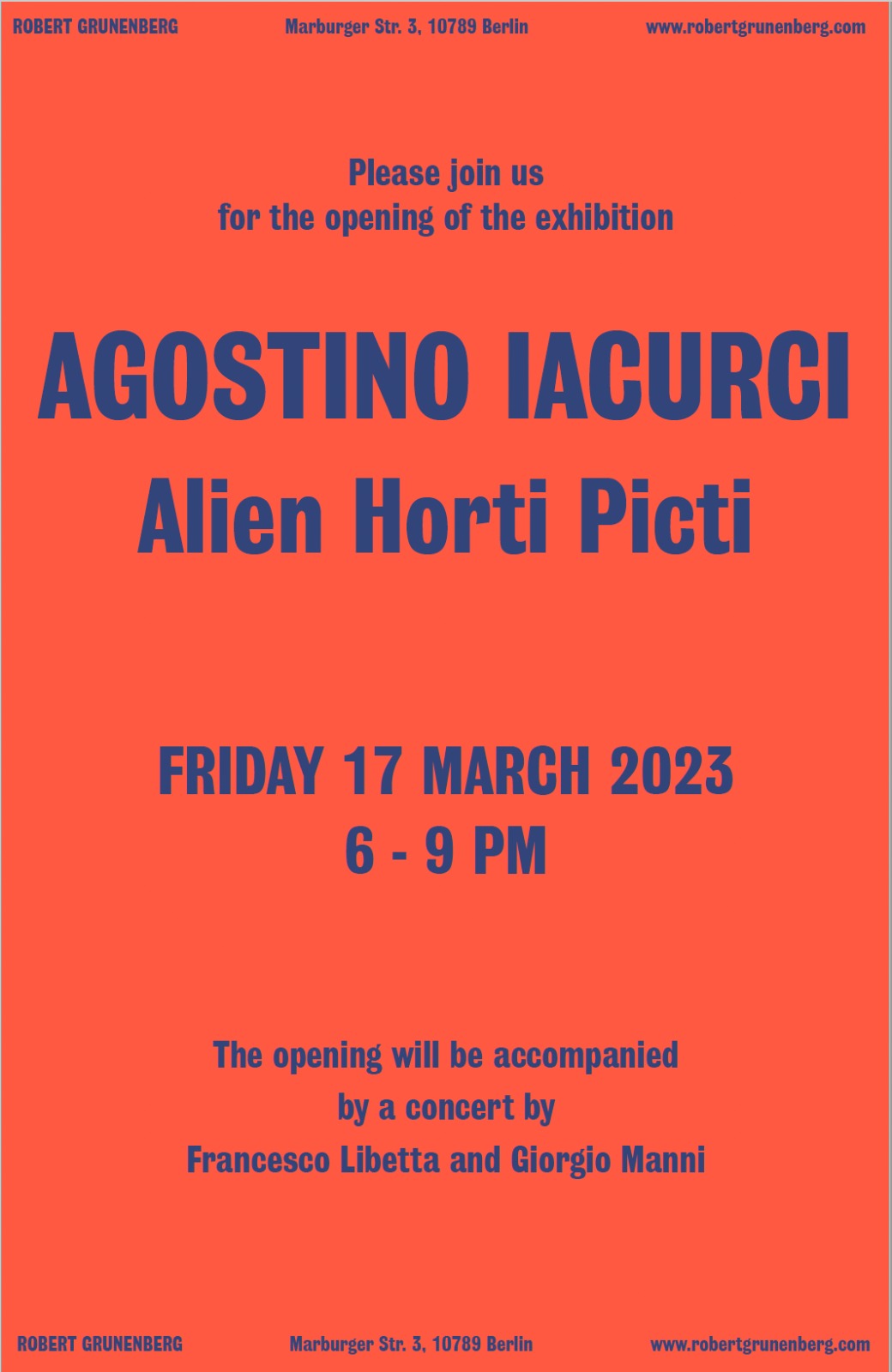Solo Exhibition:
Agostino Iacurci
Alien Horti Picti
18.03.2023 – 14.04.2023
During his time as an Italian Academy scholar at New York’s Columbia University in 2020, Agostino Iacurci followed the same routine every morning: he drew a line across the middle of a blank sheet of paper with a pencil and then freehand drawing the outline of a plant with a human head. His status in the U.S. at the time is that of a “legal alien allowed to work”. During this time, he is also fascinated by so-called “invasive alien plants” – plants that are introduced from other regions or climates through human activities, reproduce unchecked, and destroy native ecosystems. Iacurci’s fantastic, graphic hybrids of plants and humans are ornamental meditations on the stranger, the other, other, fear of the alien, the intrusion into ecological, cultural, and ideological systems, on metamorphosis, the end of anthropocentric thinking, a new relationship between civilization and nature.
They are the starting point for Alien Horti Picti, his first exhibition at Robert Grunenberg. The idea of “painted gardens” is combined in the show with Iacurci’s fascination with the “grotesque” decoration in Greco-Roman villas, rediscovered in the 15th century and extremely popular during the Renaissance and Mannerism. Because the murals were found in buried, or supposedly subterranean spaces, they were referred to by the adjective grottesco, derived from grotta (it.: cave). The decoration is characterized by a fusion of the most diverse forms, the ornamental interweaving of flowers, fruits, vases, human bodies, chimeras, and monsters.
Iacurci transforms such ornamental and mythological motifs like these from the entire history of art and culture, from antiquity to modernity, into a colorful, luminous, two-dimensional, flat geometric style. One thinks of Italian postmodernism and magic realism, but also of science fiction, horror, posthuman, and speculative narratives. Thus, in the paintings and wall works of Alien Horti Picti, human and plant reproduction merge: milk gushes from the breasts of fountains shaped as women’s bodies, heads and limbs sprout from symmetrically growing plants.
Metamorphosis is a central motif in Iacurci’s surreal, poetic universe. But unlike in Ovid, it is not tied to a story of creation. It does not lead from an archaic primordial state to the culture of the present. Rather, it resembles a kind of experimental cultivation, that takes place in a cultivated, artificial garden, in vases, bowls, and pots – without actual contact with the earth, without temporal classification. All these plants are aliens. Anthropomorphic forms grow out of the containers, in which plants, people, architectures, ornaments, and geometries combine. There are no clear hierarchies between humans and plants.
Time and time again, the Italian artist, who was born in 1986, has adapted botanical ornaments and decorations, hybridized them, and transformed them into paintings, sculptures, stage-like installations, performances, or into monumental murals on the facades of private and public institutions around the world. The exhibition Alien Horti Picti also has a stage-like, performative character. Together with Francesco Libetta, one of Italy’s most renowned pianists and composers, and pianist and restorer Giorgio Manni, Iacurci has developed a project, especially for the show. A 19th-century English table piano which he painted with plant motifs sits on a hand-painted abstract carpet representing a color circle. Iacurci is alluding to a Baroque tradition. Luca Giordano and Peter Paul Rubens, for example, painted keyboard instruments. Giorgio Manni and Francesco Libetta will play classical pieces associated with the concept of metamorphosis.
Iacurci’s ornamental growths can be also understood as figures of thought. In his work, he also refers to the research of the neurobiologist Stefano Mancuso, who calls for rethinking plants. Mancuso describes plants as sentient, thinking beings that play, communicate with other species, and form networks. Like Mancuso, Iacurci opposes the anthropocentric hierarchy of the Renaissance which is still widespread today. This sees stones and minerals as inanimate, plants as a lower form of life, animals as non-sentient, and sees humans at the top of the pyramid. Above the ordinary man there is still the “Homo studiosus” — the researching man
Anthropomorphism, the attribution of human characteristics to animals, plants, natural forces, and non-human things, takes a dialectical turn in Iacurci’s work: not only are plants anthropomorphized but conversely, humans are morphed into vegetal lifeforms. At the same time, Iacurci’s artistic practice sabotages the classical hierarchies between applied art, design, fine art, and folk arts. This democratic approach is reminiscent of the revolutionary, interdisciplinary spirit of the Milanese Memphis Group in the early 1980s, as is the reduction to elementary geometric forms and the search for an iconographic visual language with a high recognition value. Iacurci appropriates the art and design of Italian postmodernism, which worked with anthropomorphic forms and drew on historical periods, styles, and foreign cultures from a relatively Eurocentric perspective. But he does not do this to nostalgically evoke it, but to deconstruct it in a kind of 2.0 version, as post-postmodernism for the crisis-ridden Anthropocene.
